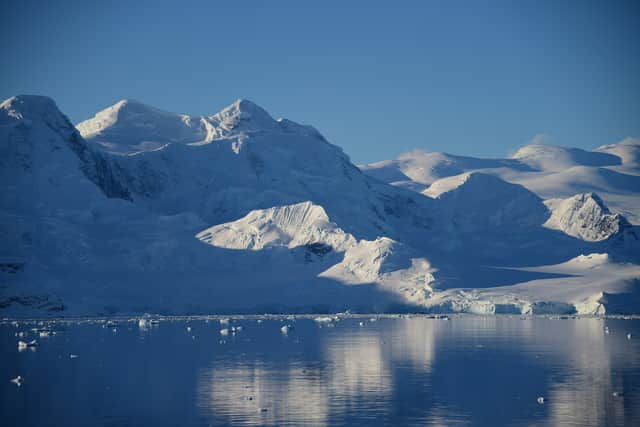What is Antarctica’s Thwaite Glacier? Why is it called ‘doomsday’ glacier, its importance - will it break away
and live on Freeview channel 276
A large and important glacier in Antarctica that could raise sea levels by several feet is holding on "by its fingernails".
The glacier is disintegrating faster than last predicted, according to a new study published in the journal Nature Geoscience.
Advertisement
Hide AdAdvertisement
Hide AdWarming temperatures around the globe are threatening to cause further deterioration, which could then destabilise the glaciers in the entire region.
The Thwaites Glacier is dubbed the “doomsday glacier” because scientists estimate that without it and its supporting ice shelves, sea levels could rise more than three to 10 feet.
It lies in the western part of the continent and is grounded to the seabed, making it more vulnerable to warming waters.
A group of international researchers found that the glacier experienced a phase of “rapid retreat” sometime in the past two centuries - over a duration of less than six months.


What is the doomsday glacier?
Advertisement
Hide AdAdvertisement
Hide AdThe Thwaites glacier is located in the Amundsen Sea in western Antarctica and is about the size of Florida.
It is among the fastest-changing glaciers in the region, according to scientists.
Along with Pine Island, also located in the Amundsen Sea, the two structures are responsible for the largest contribution of sea level rise out of Antarctica.
According to a news release accompanying the study, researchers concluded that the glacier had “lost contact with a seabed ridge”.
Advertisement
Hide AdAdvertisement
Hide AdIt also said the glacier is now retreating at a speed of 1.3 miles per year — a rate double what they predicted between 2011 and 2019.
Unlike some other glaciers that are connected to dry land, Thwaites is grounded in the seabed, making it more vulnerable to warming waters as a result of human-induced climate change.
Thwaites already accounts for about four percent of annual sea level rise.
The British Antarctic Survey’s Robert Larter, a co-author of the study, said: “Thwaites is really holding on today by its fingernails, and we should expect to see big changes over small time scales in the future — even from one year to the next — once the glacier retreats beyond a shallow ridge in its bed.”
Will it break away?
Advertisement
Hide AdAdvertisement
Hide AdScientists are finding that the Thwaites glacier is melting faster than previously thought as warm and dense deep water delivers heat to the present-day ice-shelf cavity and melts its ice shelves from below.
Researchers from the University of South Florida’s College of Marine Science and the British Antarctic Survey mapped a critical area of the seafloor in front of the glacier that could contribute to faster melting in the future.
Satellite imagery released in 2020 of Pine Island and Thwaites glaciers, which are located next to each other, showed highly crevassed areas and open fractures.
Both showed signs that the shear zones on both glaciers, where the ice shelf is thin, had weakened structurally over the past decade.
Advertisement
Hide AdAdvertisement
Hide AdScientists say it could lead to a “spiderweb” effect across the entire wedge, if hit with strong winds, according to The Washington Post.
However, researchers say that the collapse of the shelf would not immediately contribute to rising sea levels.
Although it could speed up the erosion of the Thwaites Glacier, collapsing landlocked ice from the structure into the sea.
How much has the Thwaites Glacier eroded?
Large calving events, when a large piece breaks off, occurred on Thwaites in October 2018 and February 2020, when an unprecedented retreat of the ice shelf occurred.
Advertisement
Hide AdAdvertisement
Hide AdIt resulted in ice shelves being preconditioned for further disintegration and large calving events.
This makes the ice shelves on Thwaites and Pine Island more sensitive to extreme climate change in the ocean, atmosphere and sea ice.
The researchers said they could not confidently predict whether or when the glacial structure might completely dissolve, but that reducing planet-warming emissions in the next 75 years will be crucial for its survival.
In December, researchers at the University of Colorado Boulder predicted that Thwaites will last only a few more years before it collapses.
Comment Guidelines
National World encourages reader discussion on our stories. User feedback, insights and back-and-forth exchanges add a rich layer of context to reporting. Please review our Community Guidelines before commenting.
